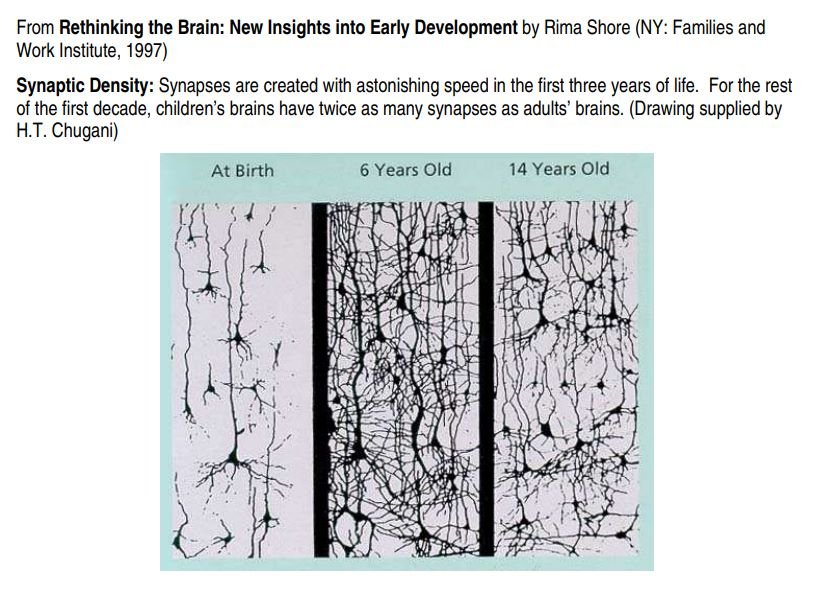Brains are built, not born by Ms. Nethra
A child’s brain is built, not born.
Did you know that 90% of a child’s brain develops by the age of 5? At birth, a child’s brain has not fully developed. Babies are born with billions of brain cells called neurons, but they are not connected. When the brain makes connections, they are called synapses, and these connections are made through sensory experiences.
The child’s brain is neuroplastic, meaning it has the ability to change in response to experiences; but timing is crucial. Experiences in the early years influence how the brain is built. Relationships with supportive caregivers are profoundly important for shaping the developing brain. Educators worldwide emphasize the importance of early childhood education for the same reason. Decades of neuroscience and behavioural research have helped illustrate why the first five years of a child’s life are critical.
Each human experience forms a neural connection in the brain and every such connection/communication forms a synapse scientists estimate that over 1 million synapses can be created per second!! Imagine how many such synapses occur before a child turns 5! These synapses form a network in the brain, which then influences everything – a child’s emotions, motor skills, intellectual capacity, problem-solving ability, and understanding of language.
In the early years, children's brains form twice as many synapses as they will eventually need. As you can see in the picture, a 6-year-old has lot of synaptic connections, but an infant hasn't made these connections because they haven't had sensory experiences yet. As we grow older, we have fewer synapses; the brain sheds synaptic connections that aren't used and the ones that remain are better organized, so the scan of a 14-year-old actually isn't a bad thing.
The healthy development of a child’s brain is built on the small moments that parents and caregivers experience as they interact with a child. As a mother feeds her child, she gazes lovingly into the child’s eyes. A father talks gently to his daughter as she snuggles on his lap, and he reads her a book. A caregiver sings a child to sleep. These everyday moments, these simple loving encounters, provide essential nourishment. Just as their bodies need food to grow, experiences children have in their earliest years are equally necessary for the growth of a healthy brain.


